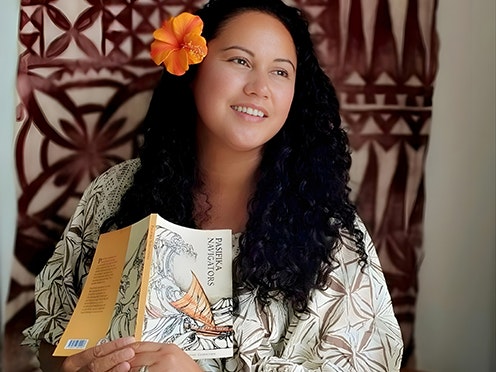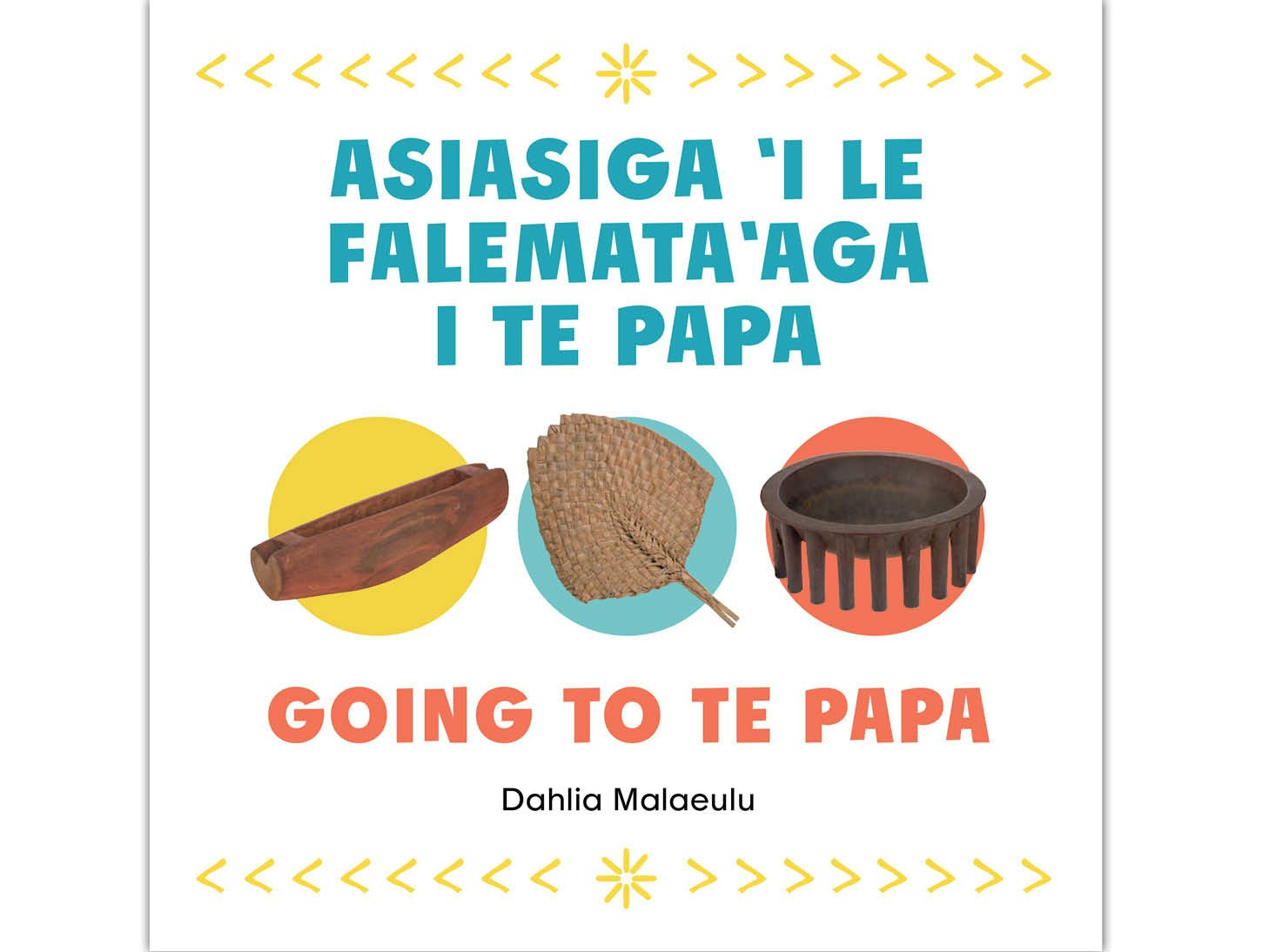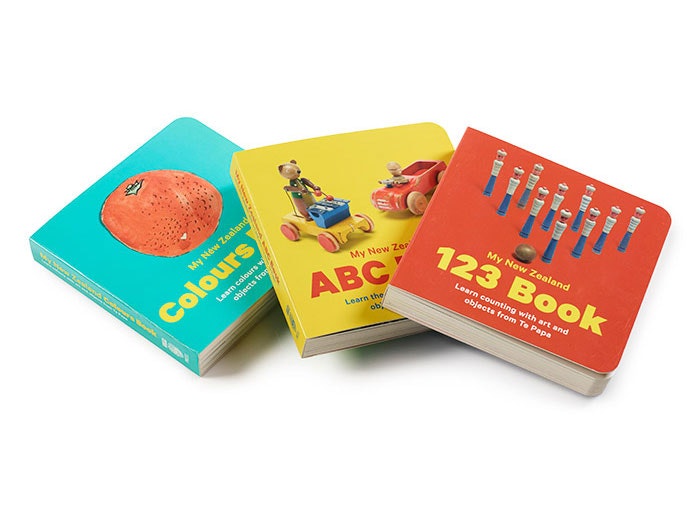
Q&A with Dahlia Malaeulu, author of Going to Te Papa
Dahlia Malaeulu discusses Going to Te Papa | Asiasiga ‘i le Falemata‘aga i Te Papa with Te Papa Press.
Dahlia Malaeulu is a Sāmoan author and teacher. She lives in Wainuiomata, Wellington.
"I wanted to make sure that our tamaiti could see their world in this book while also ensuring that all our readers, not just people of Samoan descent, could connect and have access to the artefacts we chose." – Dahlia Malaeulu
Bookshops stock very few board books in Samoan for young New Zealanders. Does this book fill a gap in the market?
Absolutely! There is a huge need for Pasifika children’s books overall and this board book is the first that I have ever seen of its kind. So it is very exciting to know that we have created a rich literacy resource that showcases Samoan cultural artefacts at Te Papa, while also helping readers to learn more about our Samoan culture and language.
It must have been extremely interesting to go into the Te Papa storerooms with the Pasifika curators to look at the collection of treasures from Sāmoa.
I was originally excited to collaborate with Te Papa due to the Pasifika spaces they create to promote our Pasifika people, our languages and our cultures. Then being able to go behind the scenes to see the entire Pasifika collection felt like a real once-in-a-lifetime experience. It is an amazing space where you are physically and spiritually immersed in treasures from across the entire Pacific.
The guided tour by Sean Mallon and Rachel Yates also helped the artefacts come to life. This made me appreciate the Pacific Histories and Cultures team and the work the Pasifika curators do to preserve our Pasifika heritages through their collection of beautiful measina even more.
Did the extent of the collection surprise you?
As a visitor to Te Papa, I got excited to share and to show the Tangata o le Moana exhibition to my own children. But imagine walking through a door in the wall, down narrow corridors and through more swipe-access doors to find a warehouse-sized room with Pasifika cultural artefacts shelved and stored as far as the eye can see and as high as a two-storey building. The sheer size of the collection is unbelievable and it’s a lot to take in at first, but the opportunity to get up close and personal with our Pasifika measina is a beautiful and spiritual experience.
How did you decide which to include?
There were so many artefacts to choose from! But once the board book format and its younger target audience was confirmed, I knew it was important to focus on everyday Samoan cultural artefacts. I wanted to make sure that our tamaiti could see their world in this book while also ensuring that all our readers, not just people of Samoan descent, could connect and have access to the artefacts we chose. I feel the everyday artefacts selected for the book draw upon prior knowledge and experiences and help to create new learning ones at the same time.
Is there one in particular that really fascinated you?
I was in awe of the hanging wall of anava, war clubs, like the nifo oti. I also really enjoyed the endless draws of beautiful Samoan siapo. But it was the history and stories behind these particular artefacts that made them stand out for me, so much so that they have helped to inspire new stories for my upcoming picture book series.
How important is it that New Zealand children of Samoan descent see treasures from their culture in our national museum?
The inclusion of Samoan and Pacific cultural artefacts at Te Papa is extremely important for our tamaiti. They help our tamaiti and families to be seen and valued and it is through their stories and histories that they can be heard and understood. These measina are more than just objects. They represent us, our language and culture, while helping to tell the story of who we are as tagata Sāmoa.
You learned the Samoan language gagana later in life. How typical is that in New Zealand these days?
Unfortunately it is quite common for many Samoans living in New Zealand to not know their language or be at a level of fluency for a variety of reasons. This is why it is so important for us to promote and encourage the learning of our Samoan language, which is at the heart of our Samoan culture and our most important measina of all.
Do you feel the language is under threat here or is it reviving?
Statistics show that all our Pasifika languages are in decline and when we lose our languages, we lose our cultures. My own journey as an author started as a result of wanting to pass our language on to the next generation and I feel that real momentum is happening through the growing demand for quality Pasifika children’s books, language classes and even dance groups. I am encouraged and grateful to everyone who is creating resources, spaces and opportunities that are not only helping to meet the varied language needs of our people but also laying a strong foundation for the revival of our Samoan language.
Of course this book is of value and interest to everyone, not just Samoan New Zealanders, don’t you think?
I definitely agree, and if there is one thing we have learnt from 2020, which highlighed racial issues around the world, it is the importance of learning about each other, understanding and accepting our differences, which can help us to better connect and unite us as New Zealanders. Also a number of government agencies, organisations and individuals have acknowledged that Pasifika identities, languages and cultures are important for all New Zealanders because the uniqueness of our Pasifika minority groups help to make up the fabric of New Zealand culture and society.
What do you hope little children and their families will learn from this book?
I really want readers to understand that our Samoan language and culture are assets and can be a gateway to learning more about ourselves and others. That who they are and what they know is important. This is why I hope that this book encourages all our tamaiti and their families to explore and learn more about our Samoan language and culture through our beautiful measina and by sharing their own stories.
You might also like


Going to Te Papa | Asiasiga ‘i le Falemata‘aga i Te Papa
An appealing board book that develops Samoan language and cultural knowledge.

Three Cool Board Books
Beautiful, collectible, cool introductions to New Zealand art for very young readers.